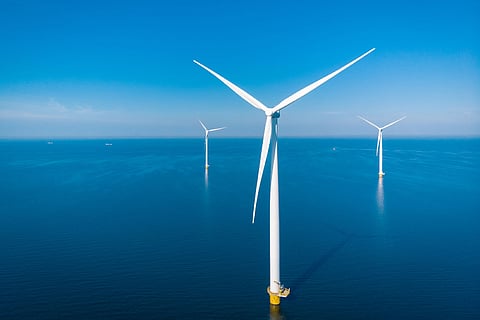

There is no doubt about the way the wind is blowing when it comes to "sustainable" power, and a coastal state that has no plans for offshore wind farms is becoming quite a rarity these days. There is also no argument about the attitude of the authorities when applications for these often extensive arrays arrive on their desks – they will be treated with all seriousness and other "sea users" will be told that wind developments will be prioritised.
There is no mystery about why the needs of fishing communities, shipping and even those who object to their sea view being spoiled, are being elbowed aside by the authorities. The wind farmers will be revenue providers in terms of the sale of "rights" by governments while answering the growing demand for greener energy.
For littoral states that would otherwise gain little or nothing from those previously using the sea, it is a win-win situation. So it will be fishermen who will be barred from sea areas that they have previously worked and ship operators who might express their concern about diversions around these extensive arrays of offshore turbines will be hard pressed to make their case.
In some respect the attitude of the authorities to the needs of these newer users of the coastal seas resemble those that were obtained when the exploitation of offshore hydrocarbons in areas such as the North Sea became feasible in the 1960s. Coastal states with offshore oil or gas prospects let it be known that nothing was going to be permitted to obstruct the plans of the developers. Wide exclusion zones were to be created to protect the drillers with heavy penalties to deter those who objected to divert from their traditional routes. The pipelines that connected up the offshore wells and brought the oil or gas to shore were also given fierce legal protection from the unwary anchor or trawl boards.
It was all an excellent precedent for the procedures that would be put in place for the siting and management of offshore wind turbines. Once again, government needs and political priorities would dictate action and those of the sustainable energy sector would trump anything else.
Initially, other interests, whether those of fishers or dredgers or of shipping, would be considered, and it was sometimes the case that the developers could be persuaded to perhaps shift the position of a proposed turbine so as to give a bit more clearance to an established shipping route. But increasingly, as the quest for offshore gigawatts has heated up, the needs of other users of the sea have been squeezed to accommodate those of the sustainable energy producers..
As an example it is worth looking at a chart of the German Bight, where routes in and out of the principal North Sea ports are increasingly constrained by encroaching wind farm protected zones. An elderly mariner made the comparison with the same sea area immediately after World War II, when vessels using routes across the North Sea would be required to use swept channels between the minefields that remained a menace for several years after the conflict had ended.
The coasts of the Baltic are also increasingly barred to shipping and fishing as a result of the spread of wind farms. And all around these developments will be found cautions about the risk of anchoring, dredging or fishing, with an extensive network of undersea cables connecting the windfarms to the shore electricity grids.
Offshore wind, which does not attract the level of objection invariably generated by proposals for shore-side turbines, seems certain to increase. It is aided by the economics of volume production and ever-improving technology. The newest turbines generate more power than their predecessors and the development of sophisticated equipment to "plant" them means that arrays can be commissioned faster. There are systems for establishing windfarms in waters previously thought too deep or difficult and viable systems for floating turbines that will operate in water depths in which the only constraint will be the mooring system and the arrangement for bringing the power onshore.
The latest boost to the offshore wind industry is its future role in providing electricity for the production of green power sources like hydrogen, rather than feeding into domestic grids. A recent energy commentator referred to this next phase as "massive". It is why the growth of offshore wind is inexorable and unstoppable, why ports are competing furiously to attract those involved in turbine building and installation and the service of offshore fields.
As an industry that will pick up the skills offloaded by a declining offshore oil and gas sector, there is no mystery about its popularity with governments. As for the traditional users of the sea, they will just have to adapt to changing priorities and share the waters with newer inhabitants with whom they must learn to live.
There was a cartoon showing the navigator of a ship telling the bemused master – "…and if we slow down to reduce CO2, avoid the windfarms, oil rigs, whale conservation zone and marine parks it will take us six days longer".
A bit of hyperbole, perhaps, but it is the way the wind is blowing.
